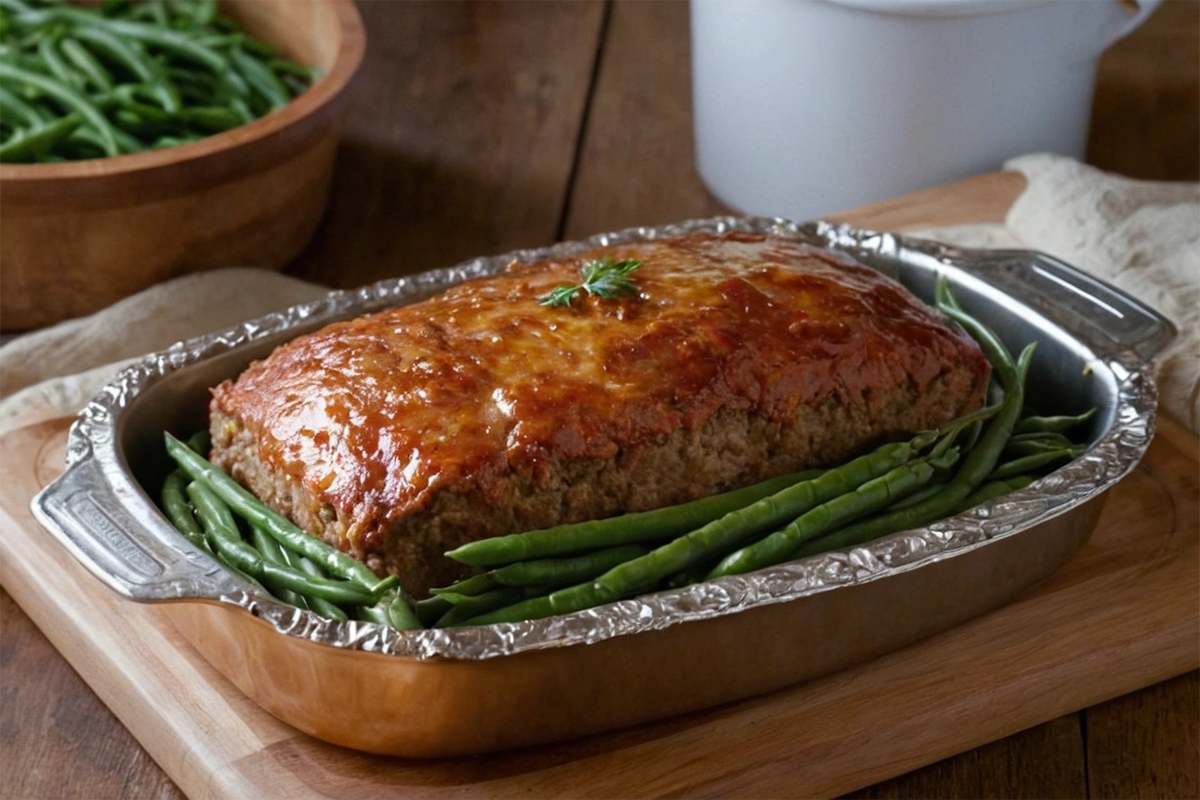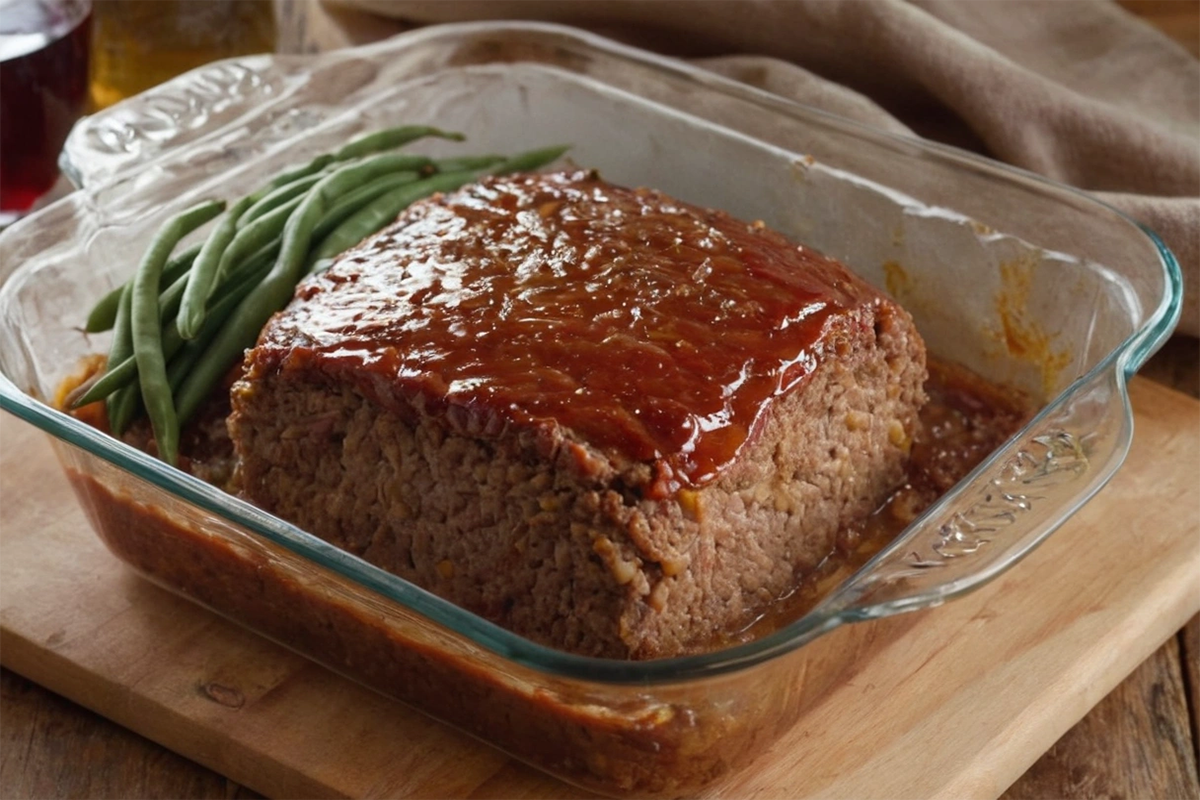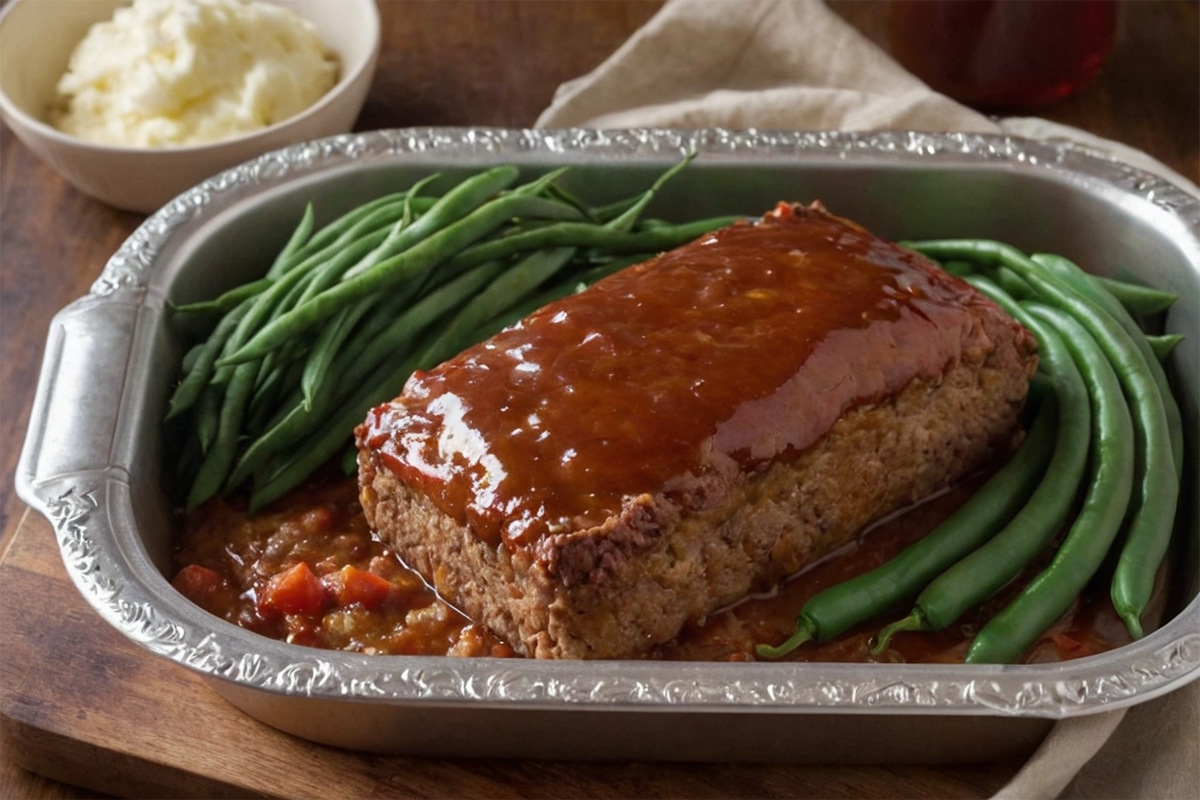Meatloaf is a classic dish loved by many for its hearty, comforting nature. Whether you’re making it for a family gathering, a weeknight meal, or a special occasion, getting the texture and moisture of your meatloaf just right can be a challenge. One of the more debated cooking techniques involves the concept of tenting meatloaf with foil during the baking process. But should you tent your meatloaf? Does it really improve the results, or could it negatively affect the dish?
This guide will walk you through everything you need to know about tenting meatloaf, from what it is, to the pros and cons, and expert opinions. If you’re also interested in other meatloaf variations, such as smoked meatloaf, we’ll cover that as well. By the end of this article, you’ll have a clear answer to the question: Should I tent my meatloaf?
Table of Contents
What Is Tenting Meatloaf?
Tenting meatloaf refers to the process of covering the meatloaf with aluminum foil in a “tent-like” fashion during the baking process. Essentially, you fold the foil so that it covers the meatloaf loosely, preventing the foil from touching the surface of the meat. This method is often used to prevent the top of the meatloaf from over-browning or drying out while allowing steam to circulate and retain moisture.
Some home cooks swear by this method, believing it helps to create a more moist and tender meatloaf, while others argue that it interferes with achieving a crispy top layer. The question remains: when and why should you tent your meatloaf?
Should You Tent Meatloaf While Cooking?
The decision to tent or not to tent your meatloaf depends on several factors, including your preferences for texture and moisture. When you tent the meatloaf, it helps trap steam, which can prevent the dish from drying out, especially if you’re using a lean ground beef mixture. However, tenting also slows the caramelization process, which may reduce the crispiness of the top layer. According to expert advice on covering meatloaf when baking, tenting is generally recommended for maintaining a moist interior.
Moreover, tenting works best in recipes where you’re cooking the loaf for a longer time at a relatively low temperature, such as 350°F (177°C). The trapped moisture keeps the meat tender, preventing it from turning out dry and tough. However, if you’re after a crispy crust, avoiding tenting might be the better option.
Pros of Tenting Meatloaf
- Prevents Drying Out
- Tenting with foil prevents excessive moisture loss, especially when using leaner meatloaf recipes with less fat content.
- Even Cooking
- By diffusing the heat, tenting helps the meatloaf cook more evenly, ensuring that both the top and center reach optimal doneness without overcooking the outer layers.
- Retains Juiciness
- The tented foil traps steam, keeping the interior moist, which is particularly helpful for larger or thicker loaves.
Cons of Tenting Meatloaf
While tenting offers several benefits, it’s not without its downsides.
- Soggy Crust
- One of the biggest complaints about tenting is that it can cause the crust to become soggy. By trapping too much moisture, the top of the meatloaf might not develop the desirable golden-brown color and texture.
- Longer Cooking Time
- When you tent, the meatloaf may take longer to reach its final temperature. Since the foil shields the loaf from direct heat, you’ll need to extend the cooking time slightly.
- Less Caramelization
- If you’re using a glaze (such as ketchup or BBQ sauce), tenting may reduce the chance of it caramelizing properly, leaving the topping undercooked or pale. For crispy, caramelized glazes, you may need to remove the foil for the last 15 to 20 minutes of cooking.
For example, according to The Biggest Meatloaf Mistake You’re Making, one of the most common errors is not allowing the meatloaf to brown adequately, which can be a result of covering it too early or tenting for too long.

When to Tent Meatloaf
So, when is it beneficial to tent meatloaf? Here are the key scenarios when tenting might be the best option:
1. Using Lean Ground Beef
If you’re working with a lean ground beef mixture (e.g., 90% lean or more), tenting can help keep the meatloaf juicy. Leaner meat tends to dry out more quickly because it lacks the fat content that naturally retains moisture during cooking.
2. Cooking a Larger Loaf
When making a larger or thicker meatloaf, tenting helps ensure the entire loaf cooks evenly. The heat from the oven may overcook the exterior before the center reaches the recommended internal temperature of 160°F (71°C). Tenting helps prevent this by slowing down the direct exposure to heat, allowing the center to cook more thoroughly.
3. Preventing Browning Too Quickly
If you notice your meatloaf browning too fast on the top before the internal temperature is reached, tenting with foil can prevent the exterior from burning. This technique helps maintain a more uniform appearance and flavor.
When Not to Tent Meatloaf
While there are times when tenting is useful, there are also situations when tenting should be avoided:
1. When You Want a Crispy Top
For those who enjoy a crispy, caramelized crust on their meatloaf, tenting may not be the best option. In fact, the moisture trapped by the foil may soften the top, leaving it soggy instead of crispy.
2. Using a Glaze
If you plan to use a glaze on your meatloaf (such as ketchup or BBQ sauce), tenting may inhibit the glaze from caramelizing properly. To achieve a rich, flavorful glaze, consider removing the foil during the last 15 minutes of cooking, allowing direct heat to create the perfect caramelized finish.
3. High-Fat Meat Mixtures
If you’re using a ground meat mixture with higher fat content (such as 80% beef), tenting might not be necessary. The fat in the meat helps retain moisture, even without a foil tent. High-fat meats naturally baste themselves as they cook, keeping the interior juicy while allowing the exterior to brown.
Step-by-Step Guide to Tenting Meatloaf
For those who decide that tenting is the right method for their recipe, here’s a step-by-step guide to doing it properly:
- Prepare Your Meatloaf: Shape the meatloaf and place it in a loaf pan or on a baking sheet lined with parchment paper.
- Preheat the Oven: Set your oven to 350°F (177°C), the standard temperature for baking meatloaf.
- Cover with Foil: Tear off a piece of aluminum foil large enough to cover the meatloaf loosely. Bend the foil into a “tent” shape so that it does not touch the top of the meatloaf.
- Bake: Place the tented meatloaf in the oven and bake according to your recipe’s instructions, typically for 1 to 1.5 hours depending on the size of the loaf.
- Remove the Foil for Browning: About 15 minutes before the meatloaf is done, remove the foil to allow the top to brown and any glaze to caramelize.

Expert Opinions on Tenting Meatloaf
Many chefs and home cooks have different opinions about whether or not to tent meatloaf. Some argue that tenting is essential for maintaining a moist interior, especially when working with lean meats. Others prefer not to tent, as they enjoy a well-browned, crispy top.
For example, professional chefs like those at Chef’s Resource recommend tenting if you’re aiming for moisture retention but caution against it if you’re using a glaze.
Home Cooking Experience
From a home cooking perspective, some cooks choose to tent their meatloaf for the first half of the cooking time and then remove the foil for the final 20-30 minutes. This approach allows the meatloaf to retain moisture while still achieving that crispy top layer that many people love.
Scientific Perspective
From a scientific standpoint, tenting works by trapping steam, which helps to maintain moisture inside the loaf. The downside is that this moisture can also soften the outer crust, which is why removing the foil toward the end of cooking is recommended.
FAQs About Tenting Meatloaf
1. Should I tent my meatloaf for the entire cooking time?
No, it’s best to tent your meatloaf for the first 50-60% of the cooking time and then remove the foil to allow the top to brown.
2. Will tenting meatloaf make it soggy?
It can if you tent the entire time. Removing the tent for the last 15-20 minutes of cooking helps avoid sogginess and allows for a crispy top.
3. Can I tent the meatloaf if I’m using a glaze?
Yes, but for the glaze to caramelize properly, remove the foil during the final stages of cooking.
4. Does tenting meatloaf change the cooking time?
Tenting may extend the cooking time slightly because the foil reduces direct heat exposure. You may need to add an extra 10-15 minutes to your recipe.
5. What’s the difference between tenting and covering with a lid?
Tenting with foil allows for some steam to escape and prevents direct heat, while covering with a lid completely traps moisture, which may result in a much softer top.
Conclusion
So, should you tent your meatloaf? Ultimately, it depends on your preferences for texture and moisture. If you’re looking for a juicy, tender loaf with minimal risk of drying out, tenting is the way to go—especially if you’re using lean meats or cooking larger loaves. However, if you love a crispy top or are using a glaze, tenting might not be necessary. For the best of both worlds, tent your meatloaf for the first part of cooking, then remove the foil in the final stages to allow for browning.
For more general information on meatloaf, you can explore this Wikipedia article, which provides a deeper understanding of meatloaf’s history and preparation methods. Additionally, check out this Quora discussion to see what others think about covering or tenting meatloaf during baking.
With these tips and insights, you’re now equipped to make the perfect meatloaf every time!

